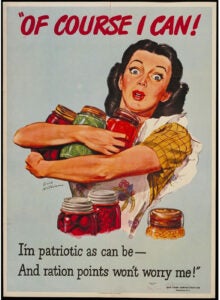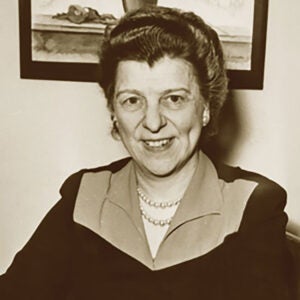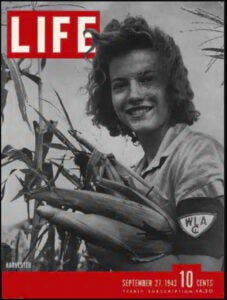“We can drive tractors. We can milk cows. We want to join … the farm production army. We are waiting to go.” — Charlotte Goodwin, October 14, 1942, edition of The New York Times.
During World War II, Goodwin was one of thousands of members of the Women’s Land Army of America, which made up roughly one third of American farmers who worked to keep their communities fed while 16 million people (mostly men) served in the war.
Both World Wars produced propaganda posters begging people to ration food, not be wasteful, and be diligent with food preservation. Check out this witty poster illustrated by Williams Dick, named “Of Course I Can!”

As husbands, sons and fathers were quickly drafted into the war, women had to figure out how to run the family farms in order to feed their families domestically as well as the troops fighting for the country. The Women’s Land Army of America wasn’t covered much in textbooks, but they played a crucial role in the war.
The idea of the Women’s Land Army came to the U.S. from Britain. During a war time tour, First Lady Eleanor Roosevelt saw how successful women were on farms, and quickly advocated for a Women’s Land Army of America — which was just as quickly shot down by the U.S. Department of Agriculture.
The USDA and other government officials didn’t think that women had what it took to be farmers, so they did not promote the idea.
Then-Secretary of Agriculture Claude Wickard was also not a big supporter of women helping on the farm, though he later recanted and admitted that women would do well in fields — but also need to fight food waste in the kitchens.
Because many farm hands were in the war, the USDA created a committee to analyze if women were tough enough to farm. Florence Hall — a longtime USDA employee who served as a committee member — delivered the news that the USDA didn’t want to hear. She then went on to lead the Women’s Land Army of America beginning in 1943.

Hall, was born in 1888 and grew up on a farm in Michigan. She received her Bachelor of Science in home economics in 1909, and later was an influential member of the Bureau of the Dairy Industry and a senior home economist with the USDA extension service until she led American women to be America’s farmers.
Backed by the nation’s first lady, the Women’s Land Army plowed, planted, and harvested along. Despite a challenging spring, the Women’s Land Army led the U.S. to a record harvest year in 1943.
The September 27, 1943, edition of Life Magazine, featured a female farmer from Minnesota on the cover, with an article inside stating that the season’s crops were “saved by novice workers.”

The United States is lucky to have had many dedicated service men and women on the battlefield, whether that be on the land, water or in the air. Our troops would not have been able to fight if it weren’t for the “novice farmers” who figured out how to feed them.
Elizabeth Maslyn is a born-and-raised dairy farmer from Upstate New York. Her passion for agriculture has driven her to share the stories of farmers with all consumers, and promote agriculture in everything she does. She works hard to increase food literacy in her community, and wants to share the stories of her local farmers.



